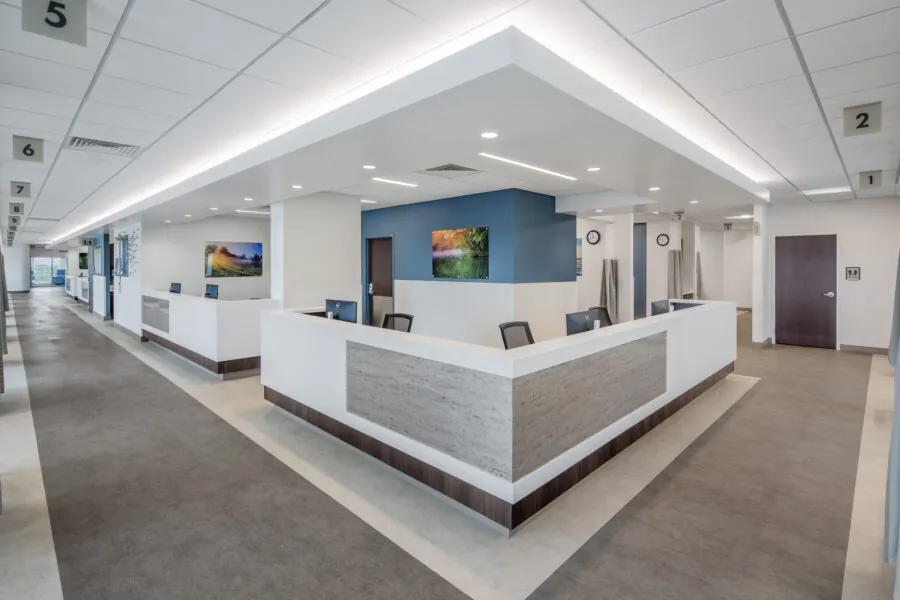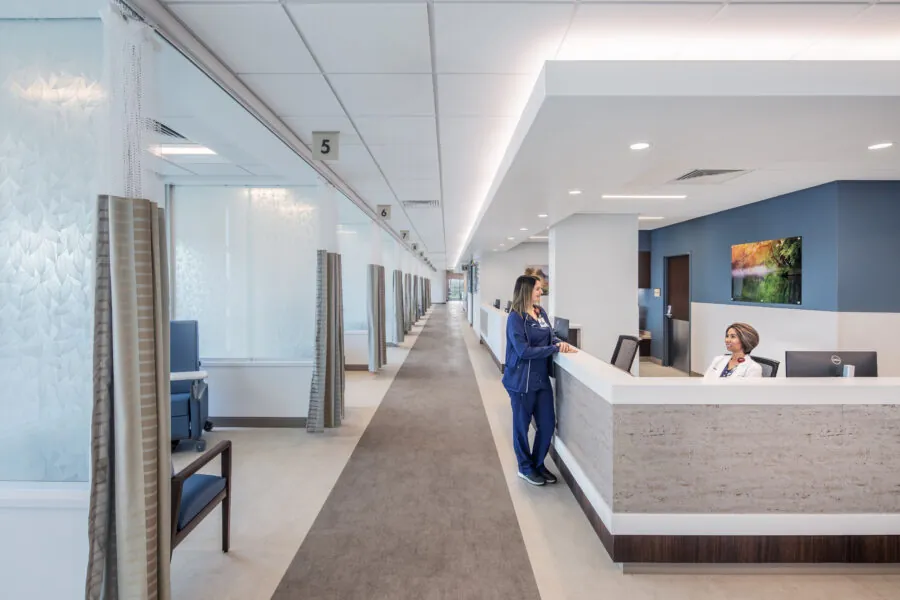Three Ways Data Drives Healthcare

The use of data in healthcare goes beyond doctor-patient communication. Today, it can pinpoint where a hospital’s location is most useful and what services produce the most desirable benefit.
RS&H’s role in this trend is to consult and design concepts about how and where a program will thrive. The process of healthcare facility construction is completed in three steps: demographic research, geographic location, and the final design. Each step is critical to bring a comprehensive, community-focused facility to an area.
1. Research Needs of Hospital
A hospital’s role is to provide the means to handle specific forms of care. Whether if it’s annual checkups or the treatment of severe injuries and illnesses, the effectiveness of your current hospital is backed by years of data collection and comparison to provide the highest quality of care.
The demographic data collected includes – but is not limited to: crime and accident rates, age averages, and common illnesses to determine what services the hospital will provide.
For example, in areas where the average age is 40-80, a hospital’s design will implement multiple ease of access measures throughout the facility. And staff specializing in geriatrics, cardiology, neurology, or hematology will be available to give the best treatment possible.
Everything from a hospital’s size to its plan of care is all based on the accumulated data. As technology evolves – so too will the data we collect.
2. Location is Vital
A cliché used by property experts is that the three most essential factors in determining the desirability of a property are “location, location, location,” and the same goes for hospitals. One of the most important uses of the geographic data collected is presenting statistics on where each facility can give continuous support to each distinct community.
For example, Zephyrhills, Florida, is a rural community of just under 16,000 residents with an average age of 50-60. The average annual income is $28,000, which is half of Florida’s average. Their culture is rural, and their lifestyle warrants general healthcare, not necessarily specialty care. Establishing plastic surgeons or restorative health would not provide the right care to better support Zephyrhills’s current community.
However, in Naples, Florida, the age demographics resemble Zephyrhills with a population of 22,000 and an average age of 50-60. The most significant difference is Naples’ culture and income. Their average annual salary is above $60,000, this. is almost $10,000 above Florida’s average. Along with a higher average income, Naples is more accepting and willing to pay for plastic or cosmetic surgery.
A health system would analyze this data to anticipate services in demand to support the clientele in Naples.
Essentially, growth in healthcare requires a balance of risks and rewards. Understanding the impact of each hospital’s benefit is a crucial point in providing better continuous care. This geographic data assist lives by understanding which services should be available and where, allowing for more personalized care.
3. Data in Design
The size of a hospital is not based solely on the size of the building. Data determines the final design the hospital will have, which is based on the number of beds it requires and supplies needed for its anticipated specializations.
For example, a 60-bed rural hospital is a small to medium-sized hospital. However, a 100-bed community hospital is larger, not only 40 beds bigger. The difference? All the supplies and staff that supports the operations of a community hospital and the varied services provided.
A rural hospital that focuses on treating minor injuries, such as simple illnesses or non-life-threatening injuries, needs manageable medical supplies. Items such as gauze, stitches, standard first aid, and essential corrective equipment, like crutches or casting materials, do not use much space.
The space that a community hospital uses is more expansive to include surgery rooms, multiple imaging modalities such as; CT, MRI rooms, and X-Ray machines. Also, advanced medical supplies, individual staff for advanced technology, and more. Because they never know what’s coming in the door, the geographic and demographic data allows designers the knowledge to build a facility that can administer care for any case it could potentially have.
In all situations, the design of a hospital always takes a team. Some hospitals have registered architects and designers on staff that provides research before meeting with our architects. In these cases, the hospital has a rough draft of the design, its template, and demographic studies. RS&H then partners with them to help design the hospital using this data. If not, our team can complete the entire design and gather the information needed, working side-by-side with all involved.
As technology advances, data becomes key to the success of bettering healthcare. The use of data goes beyond doctor-patient communication. Today, its purpose is to provide a scope of benefits to assure a successful design and a healthier community.




